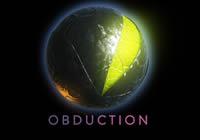Obduction (PC) Review
By Brandon (Michael) Howard  08.09.2016
08.09.2016

As the studio behind the iconic Myst series, Cyan Worlds crafts adventure games the way no one else does. Complex, multi-level puzzles, and visually enchanting environments, are all hallmarks of what made the series so well loved. Now, more than ten years after the final game in the franchise, Cyan delivers the spiritual successor to its beloved series with the crowd-funded Obduction, which carves its own niche in the world of modern adventure titles.
Obduction, aside from the highly polished visuals, feels like it has been ripped straight from the '90s. It doesn't bear much resemblance to the narrative-heavy adventure titles more commonly seen today, opting instead to make a statement through the world itself.
Everything in Obduction is tied together. The puzzles are all built into the world itself, but that shouldn't be a surprise for fans of Myst. What is surprising, however, is the level of subtlety present in every level of the design. At first glance, the world appears vast and empty, but as the game moves on, it becomes apparent that nearly every piece of the world is there by design, and all part of a much larger puzzle.
Many of the conundrums are environmental, and some can be pretty obtuse. While the first few hours won't require much more than moving a few switches and manipulating some machinery, there's definitely a steep curve to the overall difficulty encountered in the dusty, displaced Arizona desert. While most of them are enjoyable and feel good to solve, there's a couple that come down to trial and error attempts, and they do become tiresome rather quickly.

Each brainteaser unlocks a greater part of the mystery surrounding the town of Hunrath, but many also come with bits and baubles of back-story that help define the recent history of the world. As is the norm for many Cyan releases, NPC interaction is really only limited to a scant handful of characters across the story, so these little clues provide a lot of the narrative context for what's happened to the world.
The environments are beautiful, but they do occasionally suffer from some slight frame-rate issues, even on newer machines. It can make running back and forth between objectives a little dizzying at times, but it's not a huge issue. Moving between larger areas can take quite a long time, though, and that is definitely one of the bigger frustrations that occur as things open up.
The story is really something that has to be experienced first-hand, but it really hits all the right notes. It's constantly captivating, dangling just enough information to make each increasingly maddening puzzle all that much more rewarding to solve. It's a really unique experience; a sometimes frustrating one to be sure, but it's one experience fans of the studio, or fans of adventures games in general, won't want to miss out on.

Cubed3 Rating
Very Good - Bronze Award

Obduction might not be for everyone, but it's a strangely enjoyable experience, either for fans of Cyan's classic series, or for those first giving the genre a chance. The world is beautiful and complex, and the seemingly mundane environment is actually a carefully crafted world with intricate detail. There's definitely some frustrations to be had with some of the more obtuse puzzles and occasional technical stutters, but Obduction is definitely a journey worth remembering.
Comments
Comments are currently disabled

 Sign In
Sign In Game Details
Game Details
 Out now
Out now  Out now
Out now  Out now
Out now  Out now
Out now  Subscribe to this topic
Subscribe to this topic Features
Features






 Top
Top

